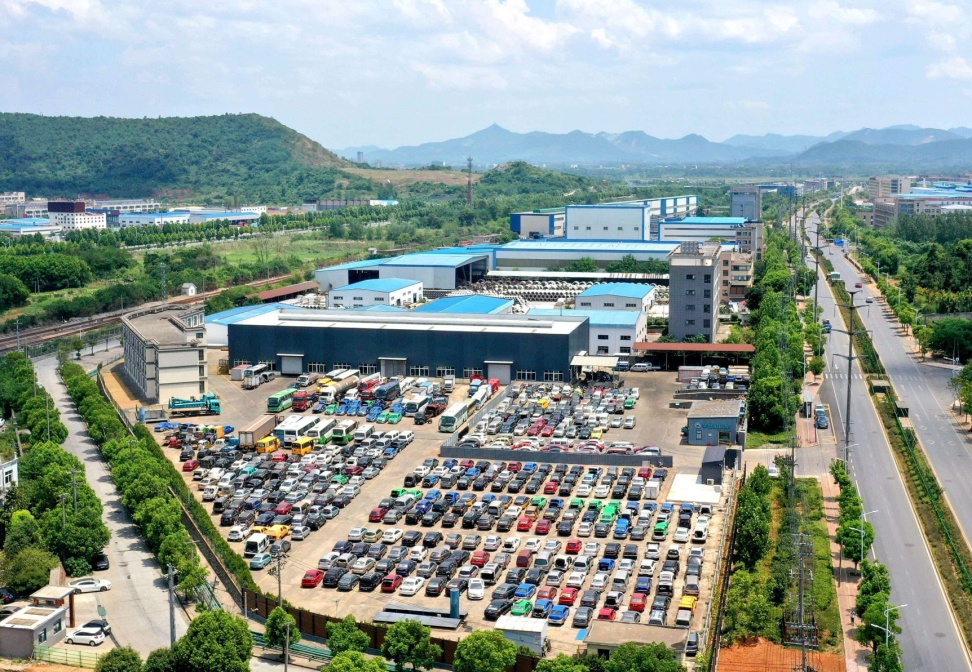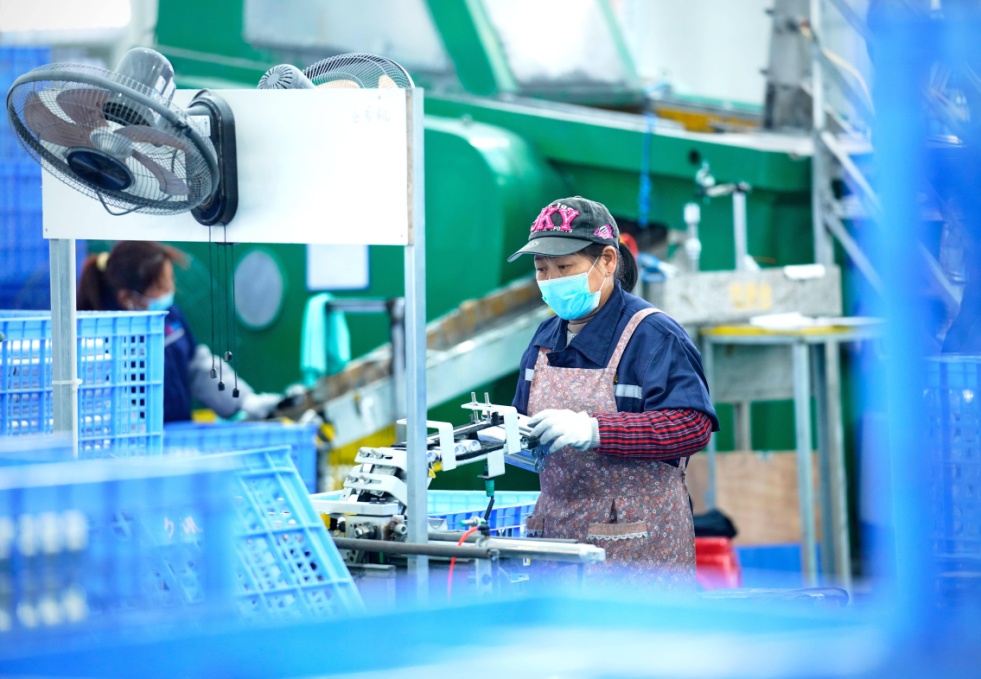




- BRNN
- BRI News
- BRNN News
- Database
Official Documents Polices and Regulations
Inter-government Documents International Cooperation BRI Countries
Business Guide Economic Data BRI Data
Trade
Investment Projects Latest projects
Cases - Content Pool

Vehicles are about to be dismantled in a factory in Tongling, east China's Anhui province. (Photo/Guo Shining)
With more than 40 million new-energy vehicles (NEVs) now on the road, China is entering a new phase in its electrification journey marked by the retirement of early-generation power batteries. Rather than allowing these batteries to become environmental liabilities, China is advancing their transformation into a key resource: an "urban mine."
In recent years, China has issued 22 national standards focused on the recycling and reuse of power batteries, laying the groundwork for a sustainable and standardized system.
According to Xu Guangjian, professor with the Department of Public Policy at the School of Public Administration and Policy, Renmin University of China, there are two main pathways for recycling retired power batteries.
The first is regenerative utilization, which involves dismantling, crushing, sorting, and smelting, or repairing materials to extract valuable metals such as lithium, cobalt, and nickel, which are then reused in new production cycles.
The second is cascade utilization, where batteries are tested, disassembled, reconfigured into secondary-use battery products that meet specific performance criteria. These repurposed units are used in applications such as energy storage and emergency backup systems.
Improper disposal of power batteries poses serious safety and environmental risks, as they contain flammable materials and heavy metals that can pollute soil, water sources, and air.
"Power batteries are rich in strategic metals such as lithium, cobalt, and nickel," said Liu Hongsheng, director-general of the department of standards and technology of China's State Administration for Market Regulation (SAMR).

A worker produces aluminum shells for power batteries in a workshop of a tech firm in Tongling, east China's Anhui province. (Photo/Chen Lei)
In 2024, China imported approximately 5.25 million tons of lithium concentrate, an increase of roughly 31 percent year on year. Retired batteries often contain higher concentrations of critical metals than natural ores, making their recovery a vital component of resource security.
As the world's largest producer and user of power batteries, China has ranked first globally in both NEV output and sales for 10 consecutive years. In 2024, the country's NEV production exceeded 13 million units, and a wave of large-scale battery retirements is expected in the coming years.
According to the SAMR, China's recycled power volumes have already exceeded 300,000 tons, representing a market value of more than 48 billion yuan ($6.75 billion). By 2030, the domestic battery recycling market is expected to exceed 100 billion yuan.
A well-developed recycling system is essential for protecting the environment, ensuring public safety, and supporting the high-quality growth of both the NEV and battery industries. However, challenges persist, including inconsistent recycling practices and the need for further technological advancement.
In response, China's State Council adopted an action plan earlier this year to enhance the national battery recycling and utilization system. The plan emphasizes improved standards, safety, and efficiency in the recycling process.
Liu highlighted that China has released 22 national standards governing the recycling and reuse of power batteries. These standards encompass a wide range of areas, including general recycling protocols, management practices, dismantling procedures, residual energy testing, regenerative utilization, lithium-ion waste processing, and regenerated black mass. Collectively, they form a robust regulatory framework supporting the high-quality development of the battery recycling industry.

Frames of power batteries for new energy vehicles are manufactured in a workshop of a company in Yibin, southwest China's Sichuan province. (Photo/Wang Yu)
One key standard outlines technical and operational requirements for dismantling retired EV batteries, offering clear guidance on safe, environmentally sound, and automated disassembly. Since its implementation, dismantling efficiency has improved by over 50 percent.
Another standard addresses regenerative utilization, detailing the handling of hazardous substances and pollution control measures. It has contributed to a reduction in energy consumption during the recycling process by more than 30 percent.
China is also making strides in international standardization. Nearly 40 Chinese experts currently serve on international technical committees focused on battery recycling, actively shaping standards that support the sustainable development of the NEV sector across its full life cycle.

Tel:86-10-65363107, 86-10-65368220, 86-10-65363106